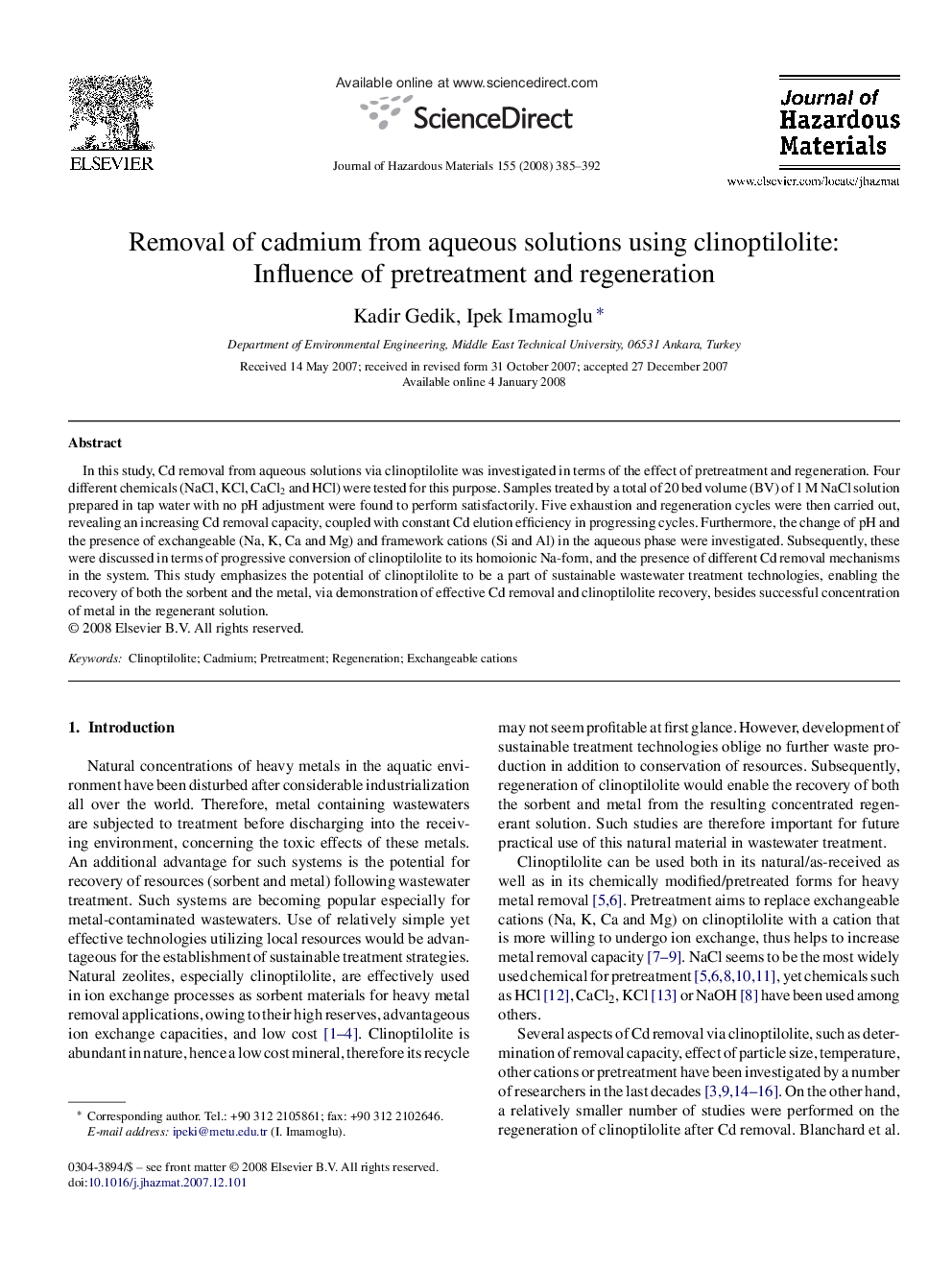| Article ID | Journal | Published Year | Pages | File Type |
|---|---|---|---|---|
| 583441 | Journal of Hazardous Materials | 2008 | 8 Pages |
Abstract
In this study, Cd removal from aqueous solutions via clinoptilolite was investigated in terms of the effect of pretreatment and regeneration. Four different chemicals (NaCl, KCl, CaCl2 and HCl) were tested for this purpose. Samples treated by a total of 20Â bed volume (BV) of 1Â M NaCl solution prepared in tap water with no pH adjustment were found to perform satisfactorily. Five exhaustion and regeneration cycles were then carried out, revealing an increasing Cd removal capacity, coupled with constant Cd elution efficiency in progressing cycles. Furthermore, the change of pH and the presence of exchangeable (Na, K, Ca and Mg) and framework cations (Si and Al) in the aqueous phase were investigated. Subsequently, these were discussed in terms of progressive conversion of clinoptilolite to its homoionic Na-form, and the presence of different Cd removal mechanisms in the system. This study emphasizes the potential of clinoptilolite to be a part of sustainable wastewater treatment technologies, enabling the recovery of both the sorbent and the metal, via demonstration of effective Cd removal and clinoptilolite recovery, besides successful concentration of metal in the regenerant solution.
Related Topics
Physical Sciences and Engineering
Chemical Engineering
Chemical Health and Safety
Authors
Kadir Gedik, Ipek Imamoglu,
